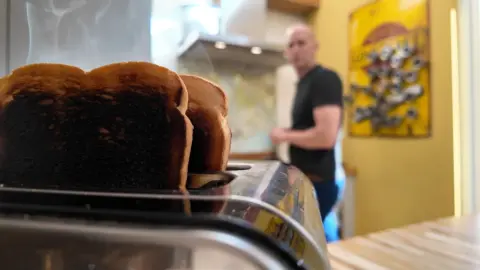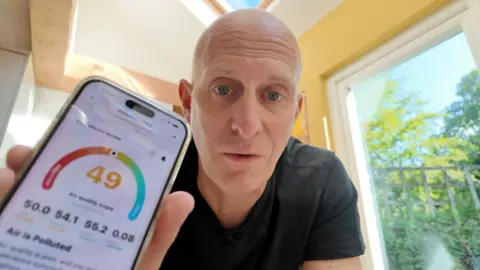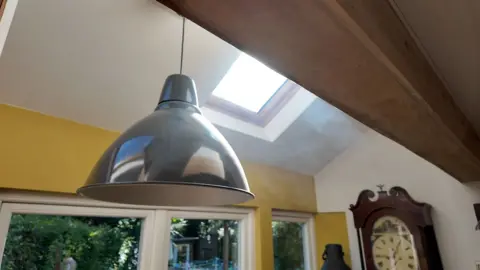'We are sleepwalking into an indoor air crisis'
 BBC
BBCA leading respiratory expert has warned the dangers of indoor air pollution are being overlooked.
Consultant respiratory physician Dr Thom Daniels, from University Hospital Southampton (UHS), says the "invisible threat" may pose an even bigger risk to health than outdoor pollution.
Exposure can trigger short-term respiratory symptoms and make existing conditions such as asthma worse.
The warning comes as the Royal College of Physicians (RCP) publishes a new report linking air pollution to 30,000 deaths a year in the UK.

"We know so much more about outdoor air pollution because it's so much easier to study," says Dr Daniels.
"One monitor allows you to know about the air quality for thousands of people. But every single house is different and we spend 90% of our time indoors and until we understand better about indoor air quality, we'll be missing the majority of our air exposure."

Particulates and harmful gases come from daily activities within the home such as cooking or using wood burning stoves.
Sprays and other household cleaning products can also add to the problem. People with chronic lung conditions are advised to limit their use where possible.
"Burning your cooking on your hob really produces a lot of the very small material, particulate matter," continues Dr Daniels.
"Dust is unavoidable, there's always going to be dust. Cleaning products produce chemicals in the air.
"And another area that is really important is wood burning stoves. Everyone loves a wood burning stove - it's so lovely - but it really does produce a lot of indoor air pollution as well as outdoor."

To understand how indoor air quality can be affected by everyday household tasks, I've borrowed an air monitor from Dr Daniels.
The app tells me the air outside is good quality scoring 97 out of a possible 100. The higher the number the less measurable pollution is detected.
To start with my indoor reading is about the same but it does not take long for things to go downhill.
Frying a piece of salmon, I light a fragranced candle to disguise the smell. A bit of vacuuming and spraying down the kitchen counter are also on the chores list.
Slowly but surely the air quality starts to fall. Without burning the food it is down to 49 out of 100 - telling me the air quality is poor.
My house just smells of cooking. I've never before thought of it as poor air quality.

How low can you go?
Curious to see what the monitor would show I decide to put two slices of bread into the toaster and crank it up.
Before long whisps of smoke begin to fill the kitchen and the air quality plummets.
It is not long before the smoke alarm sounds and the smell of burned toast fills the entire house.
My indoor air monitor now reads zero, warning of severe pollution and telling me patients and members of sensitive groups may have to take emergency action.
While poor air quality in the home is linked to household activities, which are usually short term, there is concern spikes in indoor air pollution could still be harmful.
"We do know that these spikes can induce changes in our bodies - so inflammation in the airways, in the cells of our airways and damage to the integrity of those airways to prevent other things getting in," warns Dr Daniels.
But there is action you can take to reduce the levels of indoor pollution in your home.
Experts recommend always using an extractor fan when cooking and using the rear of the hob so that fumes go up the wall into the fan rather than towards the chef.
Using only dry, untreated wood at a high temperature will also help reduce emissions from wood burners.
In the meantime, Dr Daniels is calling for more research into indoor air pollution to understand the problem we are all living with.
You can follow BBC Hampshire & Isle of Wight on Facebook, X (Twitter), or Instagram.
